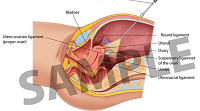Medical Illustrations for Training Videos: Medical illustrations play a crucial role in training videos within the healthcare and medical fields.



Here are some reasons why Medical Illustrations are important for Training Videos:
- Clarity and Understanding: Medical concepts can be complex and difficult to grasp solely through verbal explanations. Illustrations help break down intricate anatomical structures, physiological processes, and medical procedures into visually comprehensible components. This enhances learners’ understanding and retention of the information.
- Visual Learning: People have different learning styles, and many individuals are visual learners. Medical illustrations provide a visual representation of concepts, making it easier for a broader range of learners to grasp the content effectively.
- Accurate Representation: Medical illustrations are meticulously designed to accurately represent anatomical structures, medical conditions, and procedures. They eliminate ambiguity and ensure that learners receive accurate information, minimizing the risk of misunderstandings or misinformation.
- Consistency: In a training setting, it’s important to maintain consistency in the way information is presented. Medical illustrations can be standardized to depict concepts uniformly across different videos and materials, ensuring a cohesive learning experience.
- Demonstration of Procedures: Medical procedures, surgeries, and techniques can be challenging to convey solely through words. Illustrations provide step-by-step visual guides that allow learners to follow along and understand the process thoroughly.
- Simplification of Complex Topics: Some medical topics are inherently intricate, and simplifying them without sacrificing accuracy can be a challenge. Medical illustrations offer a way to simplify complex concepts while retaining essential information.
- Patient Education: Beyond training for medical professionals, illustrations are valuable tools for patient education. They help patients understand their medical conditions, treatment options, and post-operative care instructions, leading to better compliance and outcomes.
- Language Barrier: In a globalized healthcare landscape, training videos may be accessed by individuals with varying levels of proficiency in the language used. Visuals transcend language barriers and make the content more accessible to a diverse audience.
- Interactive Learning: Interactive medical illustrations, such as those in digital platforms or augmented reality applications, can engage learners actively. Learners can manipulate the visuals, zoom in on specific areas, and explore the content in a more immersive way.
- Memory Retention: Studies have shown that visuals are often better retained in memory compared to text alone. Integrating medical illustrations into training videos increases the chances of learners recalling and applying the learned information in real-world scenarios.
- Engagement and Interest: Well-designed medical illustrations can captivate learners’ attention and maintain their interest throughout the training video. This engagement contributes to a more effective learning experience.
Table of Contents
Creating creative medical illustrations for training videos
Creating creative medical illustrations for training videos involves a combination of artistic skills, medical knowledge, and effective communication. Here’s a step-by-step guide to help you get started:
- Understand the Content: Before you begin illustrating, thoroughly understand the medical concepts you’re going to visualize. Research and gather reference materials, such as medical textbooks, diagrams, and photographs, to ensure accuracy.
- Conceptualize the Visuals: Determine the key points you want to convey through your illustrations. Break down complex concepts into smaller, digestible components. Plan how you’ll visually represent each step or aspect of the content.
- Choose a Style: Decide on a visual style that aligns with the tone and purpose of your training videos. Your style could be realistic, stylized, cartoonish, or a mix of different approaches. Consider the preferences of your target audience and the level of detail required.
- Sketching: Start with rough sketches to lay out the composition and placement of elements. Focus on proportions, angles, and overall layout. Don’t worry about details at this stage; the goal is to establish the visual structure.
- Detailing: Once your composition is in place, start adding details to your illustrations. Use your references to accurately depict anatomical structures, medical equipment, and relevant details. Pay attention to shading, textures, and highlights to create a sense of depth.
- Color Palette: Choose a color palette that is both visually appealing and appropriate for the medical context. Stick to a consistent color scheme throughout the illustrations to maintain visual coherence.
- Labeling and Annotations: Medical illustrations often require labels and annotations to explain specific parts or processes. Use clear typography and pointers to guide the viewer’s attention and ensure the information is easily understood.
- Digital Tools: If you’re creating your illustrations digitally, use software like Adobe Illustrator, Procreate, or similar tools. These programs offer precise control over lines, colors, and layers, making the illustration process more efficient.
- Engage with Medical Professionals: Collaborate with medical professionals or educators to ensure the accuracy of your illustrations. They can provide valuable insights and feedback to enhance the educational value of your visuals.
- Iterate and Refine: Don’t be afraid to iterate and refine your illustrations based on feedback. Make adjustments to improve clarity, accuracy, and overall visual appeal.
- Consider Animation: If your training videos are animated, plan how your illustrations will come to life. Animations can demonstrate processes, movements, and interactions more effectively than static images.
- User-Centered Design: Keep the needs of the learners in mind. Design your illustrations to facilitate understanding, engagement, and retention. Avoid clutter and complexity that might confuse the audience.
- Practice and Experience: Like any skill, creating effective medical illustrations requires practice. The more you work on different projects, the better you’ll become at translating medical concepts into compelling visuals.
Remember that creative medical illustrations should balance creativity with accuracy. Strive to create visuals that are not only aesthetically pleasing but also serve as valuable learning tools for medical professionals and learners in the healthcare field.
Experienced medical illustrators are always important
Experienced medical illustrators are essential for creating medical illustrations for training videos due to the specialized knowledge and skills they possess. Here’s why their expertise is crucial:
- Accuracy and Precision: Medical illustrations need to accurately represent anatomical structures, medical procedures, and conditions. Experienced medical illustrators have a deep understanding of medical terminology, anatomy, and physiology, ensuring that the visuals are precise and adhere to scientific accuracy.
- Visual Communication: Effective medical illustrations convey complex medical concepts in a visually comprehensible manner. Experienced illustrators know how to simplify intricate details without oversimplifying the content, striking the right balance between clarity and accuracy.
- Medical Knowledge: A solid foundation in medical knowledge is crucial to creating illustrations that align with medical best practices. Experienced medical illustrators are often familiar with medical literature, terminology, and the latest advancements, allowing them to produce up-to-date and relevant visuals.
- Ethical Considerations: Medical illustrations sometimes involve sensitive or graphic content. Experienced illustrators are trained to handle such content ethically and with sensitivity, ensuring that the visuals are appropriate for their intended purpose and audience.
- Contextual Understanding: Medical concepts often need to be visualized within a specific context, such as a surgical procedure, medical device usage, or disease progression. Experienced illustrators understand these contexts and can depict them accurately, enhancing the educational value of the illustrations.
- Attention to Detail: Medical illustrations require a high level of detail to accurately represent intricate structures. Experienced illustrators are skilled at capturing nuances and subtleties that are crucial for conveying medical information effectively.
- Aesthetic Sensibility: While accuracy is paramount, the aesthetic presentation of medical illustrations is also important. Experienced illustrators can create visuals that are both scientifically accurate and visually engaging, making them more effective in capturing learners’ attention.
- Collaboration with Experts: Experienced medical illustrators often collaborate with medical professionals, educators, and researchers to ensure that the illustrations meet educational goals and accurately reflect medical concepts. This collaborative approach enhances the quality and relevance of the visuals.
- Versatility in Styles: Different training videos may require varying visual styles to match the tone and target audience. Experienced illustrators have the versatility to adapt their styles while maintaining accuracy, ensuring the illustrations align with the overall video content.
- Time Efficiency: Given their expertise, experienced medical illustrators can work more efficiently, creating high-quality illustrations in a shorter period. This is especially important in fast-paced environments where training materials need to be produced promptly.
- Quality Assurance: Experienced illustrators have a well-developed sense of quality and can review their work critically to ensure that all details are accurate and appropriate. This reduces the likelihood of errors or inaccuracies in the final illustrations.
In conclusion, medical illustrations are vital for creating effective and engaging training videos in the medical field. They enhance clarity, simplify complex topics, cater to different learning styles, and ensure accurate representation, ultimately leading to better-educated medical professionals and improved patient care.
Our Services:
The Medical Illustration Company is a professional medical illustration company providing services for clients from all over the world. The Medical Illustration Company works with clients in all sectors of healthcare, from private practice to industry and academia, with a special focus on the scientific, biological, pharmaceutical, and cosmetics sectors. Our clients are involved in the development of new drugs, scientific research, biochemical research, vaccines, and medical devices; in the approval process for these products or new procedures; and can include everything from large multinational corporations to small start-ups.
Medical Illustration Services | Unbeatable Price
The Medical Illustration Company is a professional medical illustration company providing services for clients from all over the world. The Medical Illustration Company works with clients in all sectors of healthcare, from private practice to industry and academia, with a special focus on the scientific, biological, pharmaceutical, and cosmetics sectors. Our clients are involved in the development of new drugs, scientific research, biochemical research, vaccines, and medical devices; in the approval process for these products or new procedures; and can include everything from large multinational corporations to small start-ups.
Medical Illustration Price Cost (Unbeatable Lowest Pricing)
- $49 per line illustration (simple illustration in black and white drawing. Including one organ, instrument or person). Free iterations + Full copyright ownership transfer included.
- $79 per colored illustration (standard difficulty illustration in color. Including one organ, instrument or person). Free iterations + Full copyright ownership transfer included.
- $99 per complex colored illustration (colored, illustration including shading. (Including one system, procedure, etc). Free iterations + Full copyright ownership transfer included.
Submit Your Project Now: Looking for Medical Illustration Services?
